FBG Sensing Data Motivated Dynamic Feature Assessment of the Complicated CFRP Antenna Beam under Various Vibration Modes
Abstract
:1. Introduction
2. Experimental Investigation
2.1. Sensor Layout and Installation
2.2. Testing Cases
3. Strain Distribution of CFRP Antenna Beam under Different Loading Modes
3.1. Discussion on the Time and Frequency Domain Data Measured by BH–Sensor–d5
3.2. Strain Distribution along the Span of the Beam
4. The time and Frequency Domain Analysis under Different Vibration Modes
4.1. Sweep Frequency Test
4.2. Shock Vibration Test
4.3. Simulated Long-Life Vibration Test
4.4. Functional Vibration Test
4.5. Vibration Feature Analysis
5. Conclusions
Author Contributions
Funding
Data Availability Statement
Acknowledgments
Conflicts of Interest
References
- Xian, G.; Guo, R.; Li, C.; Wang, Y. Mechanical Performance Evolution and Life Prediction of Prestressed CFRP Plate Exposed to Hygrothermal and Freeze-Thaw Environments. Compos. Struct. 2022, 293, 115719. [Google Scholar] [CrossRef]
- Saad, K.; Lengyel, A. Strengthening Timber Structural Members with CFRP and GFRP: A State-of-the-Art Review. Polymers 2022, 14, 2381. [Google Scholar] [CrossRef] [PubMed]
- Aoki, Y.; Byon (Goichi Ben), O.-I. Damage Detection of CFRP Pipes and Shells by Using Localized Flexibility Method. Adv. Compos. Mater. 2001, 10, 189–198. [Google Scholar] [CrossRef]
- Yuan, K.; Liu, K.; Wang, Z.; Wei, K.; Yang, M. Dynamic Fracture in CFRP Laminates: Effect of Projectile Mass and Dimension. Eng. Fract. Mech. 2021, 251, 107764. [Google Scholar] [CrossRef]
- Wang, H.; Jiang, L.; Xiang, P. Priority Design Parameters of Industrialized Optical Fiber Sensors in Civil Engineering. Opt. Laser Technol. 2018, 100, 119–128. [Google Scholar] [CrossRef]
- Moreno-García, P.; Castro, E.; Romo-Melo, L.; Gallego, A.; Roldán, A. Vibration Tests in CFRP Plates for Damage Detection via Non-Parametric Signal Analysis. Shock Vib. 2012, 19, 385835. [Google Scholar] [CrossRef]
- Zhang, X.; Hao, H.; Shi, Y.; Cui, J.; Zhang, X. Static and Dynamic Material Properties of CFRP/Epoxy Laminates. Constr. Build. Mater. 2016, 114, 638–649. [Google Scholar] [CrossRef]
- Wang, H.; Xiang, P.; Jiang, L. Optical Fiber Sensor Based In-Field Structural Performance Monitoring of Multilayered Asphalt Pavement. J. Light. Technol. 2018, 36, 3624–3632. [Google Scholar] [CrossRef]
- Sikdar, S.; Liu, D.; Kundu, A. Acoustic Emission Data Based Deep Learning Approach for Classification and Detection of Damage-Sources in a Composite Panel. Compos. Part B Eng. 2022, 228, 109450. [Google Scholar] [CrossRef]
- Sikdar, S.; Mirgal, P.; Banerjee, S. Low-Velocity Impact Source Localization in a Composite Sandwich Structure Using a Broadband Piezoelectric Sensor Network. Compos. Struct. 2022, 291, 115619. [Google Scholar] [CrossRef]
- Lan, Z.; Saito, O.; Yu, F.; Okabe, Y. Impact Damage Detection in Woven CFRP Laminates Based on a Local Defect Resonance Technique with Laser Ultrasonics. Mech. Syst. Signal Process. 2024, 207, 110929. [Google Scholar] [CrossRef]
- Melo, J.D.D.; Radford, D.W. Time and Temperature Dependence of the Viscoelastic Properties of CFRP by Dynamic Mechanical Analysis. Compos. Struct. 2005, 70, 240–253. [Google Scholar] [CrossRef]
- Tsuda, H. Ultrasound and Damage Detection in CFRP Using Fiber Bragg Grating Sensors. Compos. Sci. Technol. 2006, 66, 676–683. [Google Scholar] [CrossRef]
- Fu, T.; Liu, Y.; Li, Q.; Leng, J. Fiber Optic Acoustic Emission Sensor and Its Applications in the Structural Health Monitoring of CFRP Materials. Opt. Lasers Eng. 2009, 47, 1056–1062. [Google Scholar] [CrossRef]
- Luyckx, G.; Voet, E.; Waele, W.D.; Degrieck, J. Multi-Axial Strain Transfer from Laminated CFRP Composites to Embedded Bragg Sensor: I. Parametric Study. Smart Mater. Struct. 2010, 19, 105017. [Google Scholar] [CrossRef]
- Panopoulou, A.; Loutas, T.; Roulias, D.; Fransen; Kostopoulos, V. Dynamic Fiber Bragg Gratings Based Health Monitoring System of Composite Aerospace Structures. Acta Astronaut. 2011, 69, 445–457. [Google Scholar] [CrossRef]
- Wu, Q.; Yu, F.; Okabe, Y.; Kobayashi, S. Application of a Novel Optical Fiber Sensor to Detection of Acoustic Emissions by Various Damages in CFRP Laminates. Smart Mater. Struct. 2014, 24, 015011. [Google Scholar] [CrossRef]
- Lu, S.; Jiang, M.; Sui, Q.; Sai, Y.; Jia, L. Damage Identification System of CFRP Using Fiber Bragg Grating Sensors. Compos. Struct. 2015, 125, 400–406. [Google Scholar] [CrossRef]
- Wang, H.-P.; Ni, Y.-Q.; Dai, J.-G.; Yuan, M.-D. Interfacial Debonding Detection of Strengthened Steel Structures by Using Smart CFRP-FBG Composites. Smart Mater. Struct. 2019, 28, 115001. [Google Scholar] [CrossRef]
- Wang, H.; Dai, J.-G. Strain Transfer Analysis of Fiber Bragg Grating Sensor Assembled Composite Structures Subjected to Thermal Loading. Compos. Part B Eng. 2019, 162, 303–313. [Google Scholar] [CrossRef]
- Goossens, S.; Berghmans, F.; Sharif Khodaei, Z.; Lambinet, F.; Karachalios, E.; Saenz-Castillo, D.; Geernaert, T. Practicalities of BVID Detection on Aerospace-Grade CFRP Materials with Optical Fibre Sensors. Compos. Struct. 2021, 259, 113243. [Google Scholar] [CrossRef]
- Budadin, O.; Vavilov, V.; Fedotov, M.; Vasiliev, S.; Gnusin, P.; Kozelskaya, S.; Kuimova, M. Theoretical and Experimental Studies of Structural Health Monitoring of Carbon Composites with Integrated Optical Fiber Sensors Based on Fiber Bragg Gratings. J Nondestruct. Eval 2021, 40, 89. [Google Scholar] [CrossRef]
- Wang, H.-P.; Chen, C.; Ni, Y.-Q.; Jayawickrema, M.; Epaarachchi, J. Computer-Aided Feature Recognition of CFRP Plates Based on Real-Time Strain Fields Reflected from FBG Measured Signals. Compos. Part B Eng. 2023, 263, 110866. [Google Scholar] [CrossRef]
- Chen, C.; Wang, H.-P.; Ma, J.; Wusiman, M. Dynamic Feature Identification of Carbon-Fiber-Reinforced Polymer Laminates Based on Fiber Bragg Grating Sensing Technology. Buildings 2023, 13, 2292. [Google Scholar] [CrossRef]
- Alarifi, I.M. Investigation the Conductivity of Carbon Fiber Composites Focusing on Measurement Techniques under Dynamic and Static Loads. J. Mater. Res. Technol. 2019, 8, 4863–4893. [Google Scholar] [CrossRef]
- Wei, X.; Russell, J.; Živanović, S.; Toby Mottram, J. Measured Dynamic Properties for FRP Footbridges and Their Critical Comparison against Structures Made of Conventional Construction Materials. Compos. Struct. 2019, 223, 110956. [Google Scholar] [CrossRef]
- Barile, C. Innovative Mechanical Characterization of CFRP by Using Acoustic Emission Technique. Eng. Fract. Mech. 2019, 210, 414–421. [Google Scholar] [CrossRef]
- Sikdar, S.; Mirgal, P.; Banerjee, S.; Ostachowicz, W. Damage-Induced Acoustic Emission Source Monitoring in a Honeycomb Sandwich Composite Structure. Compos. Part B Eng. 2019, 158, 179–188. [Google Scholar] [CrossRef]
- Sikdar, S.; Fiborek, P.; Kudela, P.; Banerjee, S.; Ostachowicz, W. Effects of Debonding on Lamb Wave Propagation in a Bonded Composite Structure under Variable Temperature Conditions. Smart Mater. Struct. 2018, 28, 015021. [Google Scholar] [CrossRef]
- IEC 61373; Railway Applications–Rolling Stock Equipment–Shock and Vibration Tests. GlobalSpec: Albany, NY, USA. Available online: https://standards.globalspec.com/std/1256084/IEC%2061373 (accessed on 23 June 2024).
- Wang, H.; Xiang, P.; Jiang, L. Strain Transfer Theory of Industrialized Optical Fiber-Based Sensors in Civil Engineering: A Review on Measurement Accuracy, Design and Calibration. Sens. Actuators A Phys. 2019, 285, 414–426. [Google Scholar] [CrossRef]
- Wang, H.; Jiang, L.; Xiang, P. Improving the Durability of the Optical Fiber Sensor Based on Strain Transfer Analysis. Opt. Fiber Technol. 2018, 42, 97–104. [Google Scholar] [CrossRef]
- Nawab, S.; Quatieri, T.; Lim, J. Signal Reconstruction from Short-Time Fourier Transform Magnitude. IEEE Trans. Acoust. Speech Signal Process. 1983, 31, 986–998. [Google Scholar] [CrossRef]
- Wang, H.-P.; Gong, X.-S.; Wang, X.-Z.; Feng, S.-Y.; Yang, T.-L.; Guo, Y.-X. Discrete Curvature-Based Shape Configuration of Composite Pipes for Local Buckling Detection Based on Fiber Bragg Grating Sensors. Measurement 2022, 188, 110603. [Google Scholar] [CrossRef]
- Wang, H.; Sun, W.; Sun, W.; Ren, Y.; Zhou, Y.; Qian, Q.; Kumar, A. A novel tool condition monitoring based on Gramian angular field and comparative learning. Int. J. Hydromechatronics 2023, 6, 93–107. [Google Scholar] [CrossRef]
- Wang, D.; Gao, L.; Qu, Y.; Sun, X.; Liao, W. Frequency-to-spectrum mapping GAN for semisupervised hyperspectral anomaly detection. CAAI Trans. Intell. Technol. 2023, 8, 1258–1273. [Google Scholar] [CrossRef]
- Liu, B.; Lu, W. Surrogate Models in Machine Learning for Computational Stochastic Multi-Scale Modelling in Composite Materials Design. Int. J. Hydromechatronics 2022, 5, 336–365. [Google Scholar] [CrossRef]
- Du, H.; Du, S.; Li, W. Probabilistic Time Series Forecasting with Deep Non-Linear State Space Models. CAAI Trans. Intell. Technol. 2023, 8, 3–13. [Google Scholar] [CrossRef]
- Luo, C. KELL: A kernel-embedded local learning for data-intensive modeling. Artif. Intell. Appl. 2024, 2, 38–44. [Google Scholar] [CrossRef]
- Panella, F.; Pirinu, A. Fatigue and Damage Analysis on Aeronautical CFRP Elements under Tension and Bending Loads: Two Cases of Study. Int. J. Fatigue 2021, 152, 106403. [Google Scholar] [CrossRef]
- Brincker, R.; Zhang, L.; Andersen, P. Modal Identification of Output-Only Systems Using Frequency Domain Decomposition. Smart Mater. Struct. 2001, 10, 441. [Google Scholar] [CrossRef]
- Amador, S.D.R.; Brincker, R. Robust Multi-Dataset Identification with Frequency Domain Decomposition. J. Sound Vib. 2021, 508, 116207. [Google Scholar] [CrossRef]
- Rahnamay Farnod, B.; Reinhart, W.F.; Napolitano, R.K. Displacement-Based Structural Identification Using Differentiable Physics. Eng. Struct. 2023, 293, 116632. [Google Scholar] [CrossRef]
- Guo, D.; Wang, H.-P.; Liu, Y.-L.; Gao, W.-Y.; Dai, J.-G. Structural Behavior of CFRP-Strengthened Steel Beams at Different Service Temperatures: Experimental Study and FE Modeling. Eng. Struct. 2023, 293, 116646. [Google Scholar] [CrossRef]


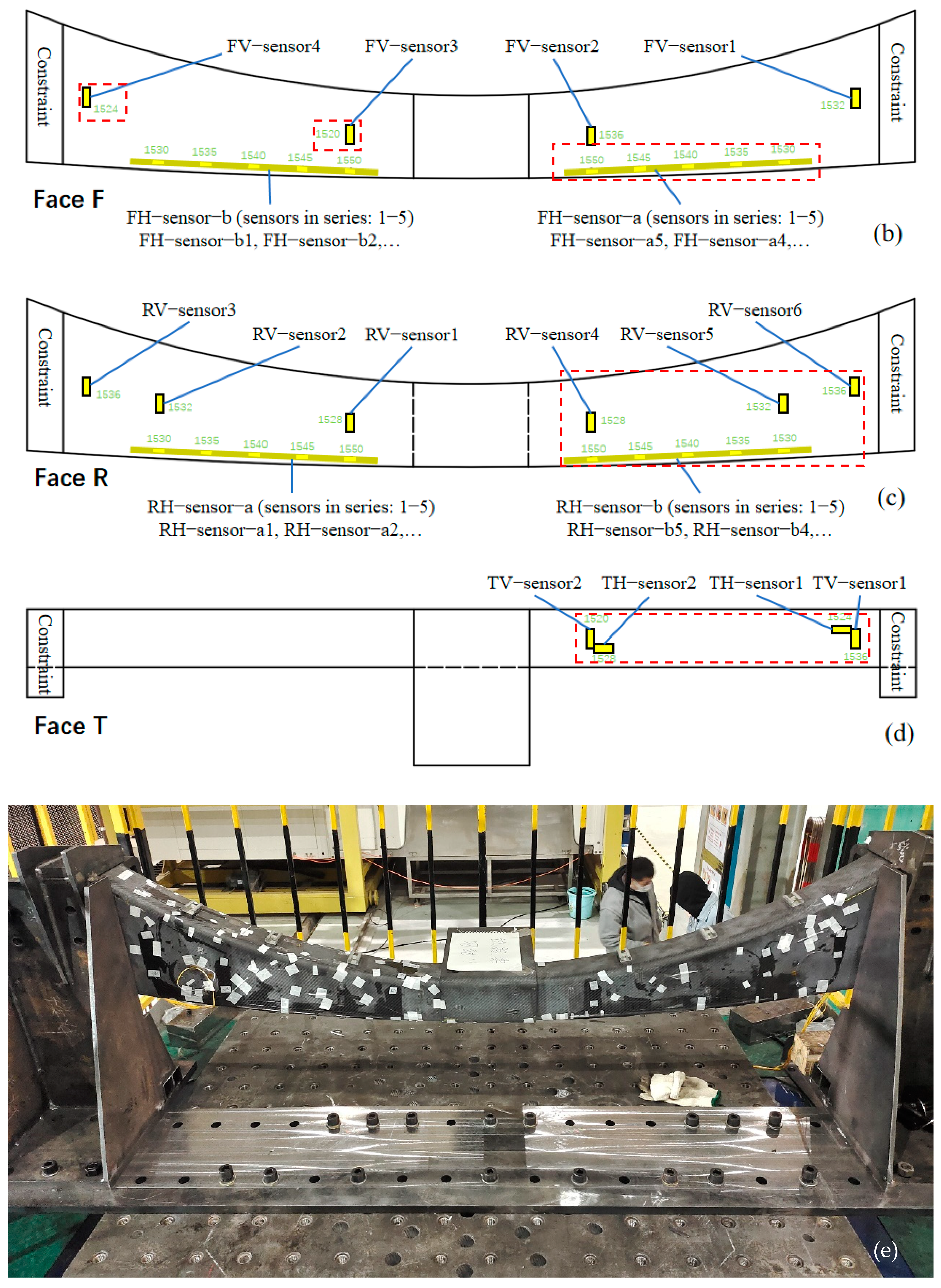
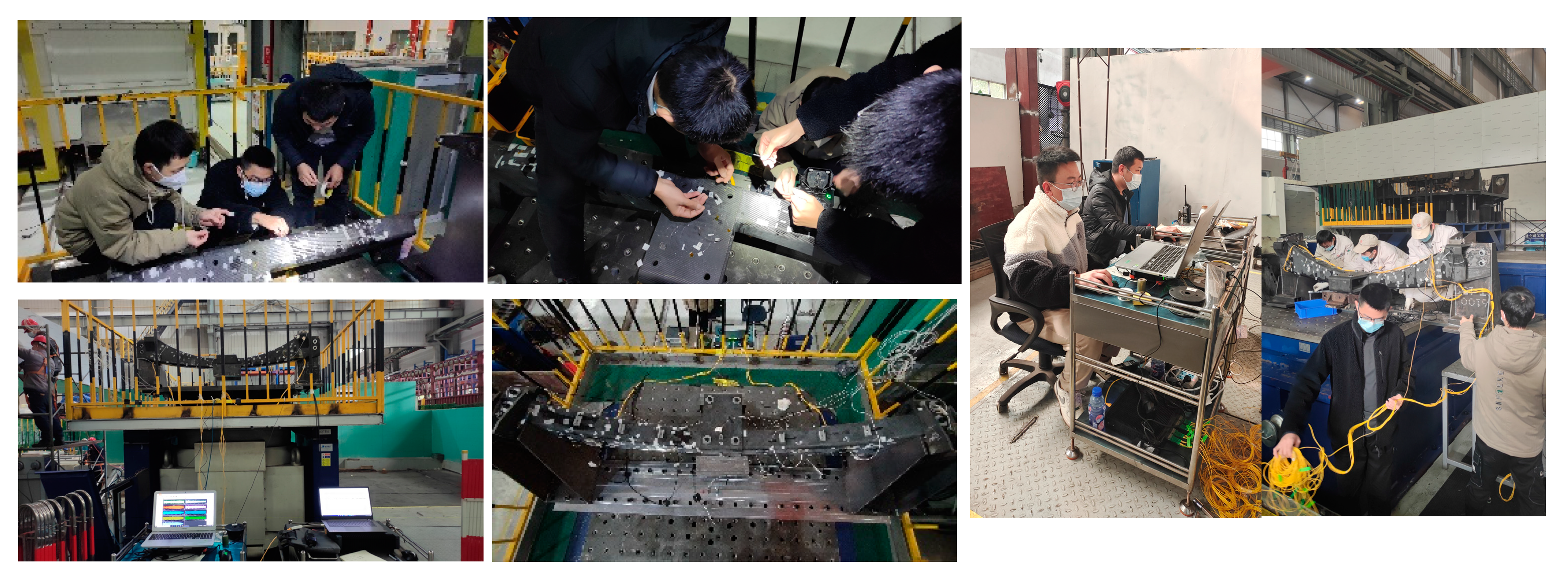
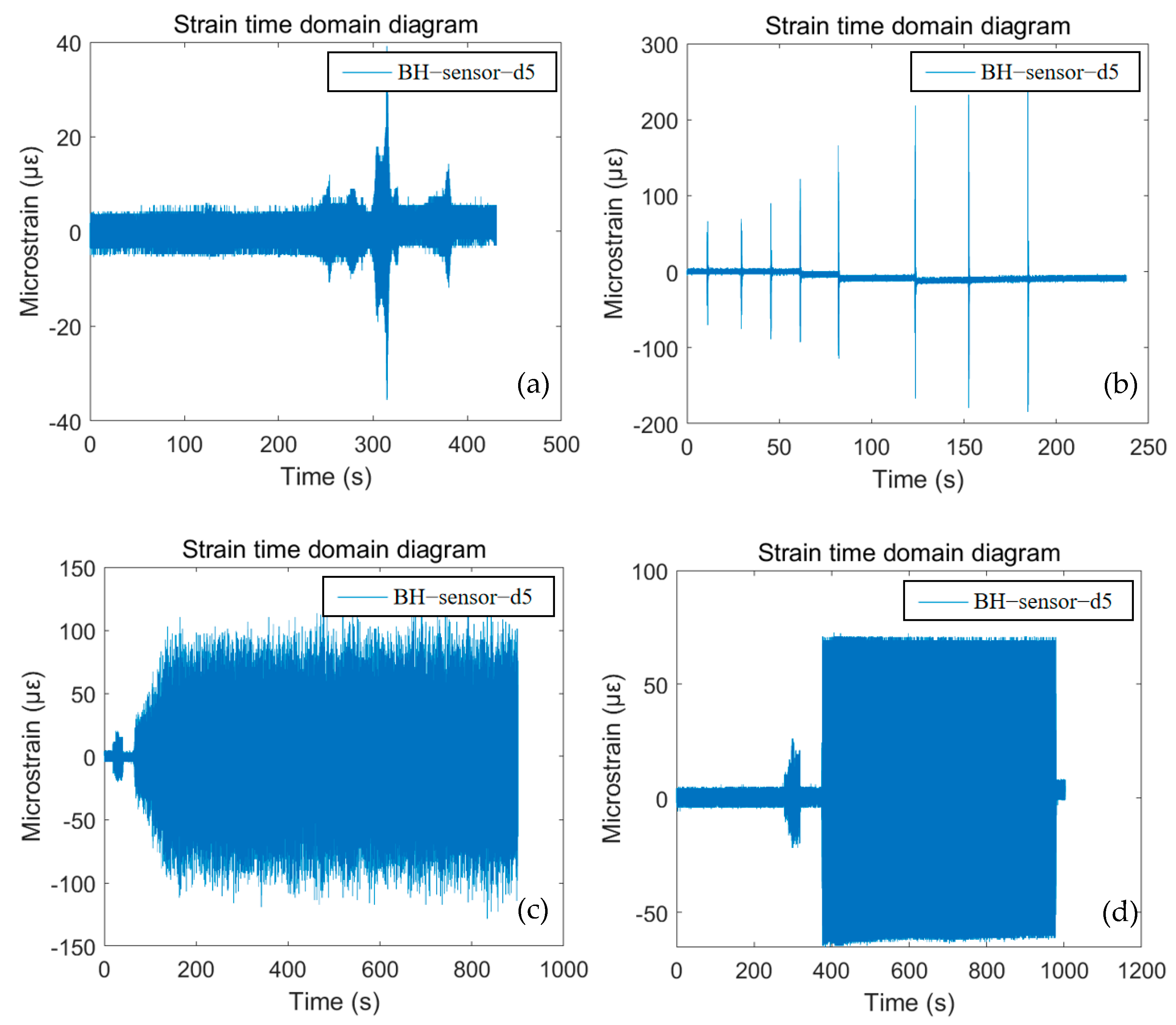
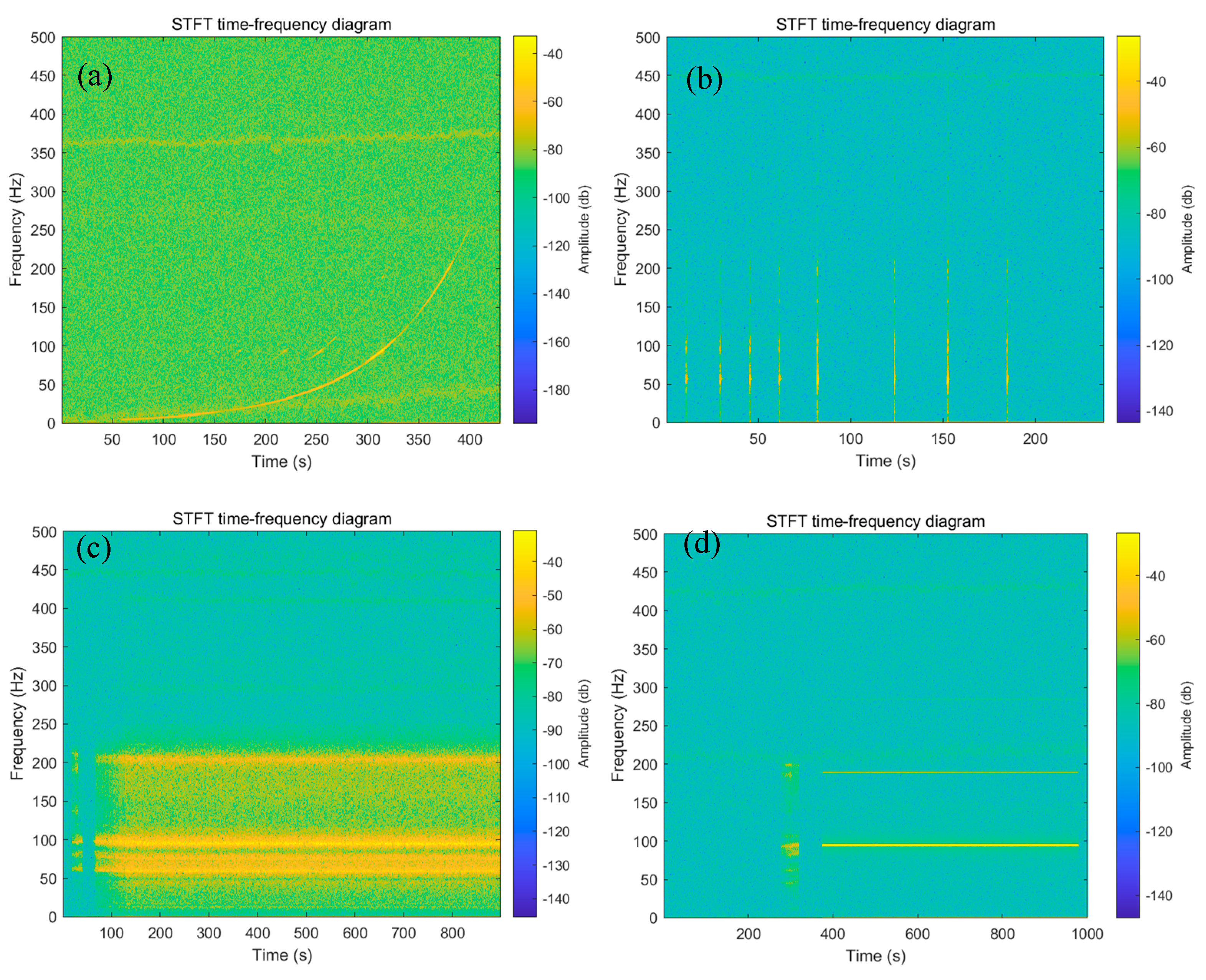
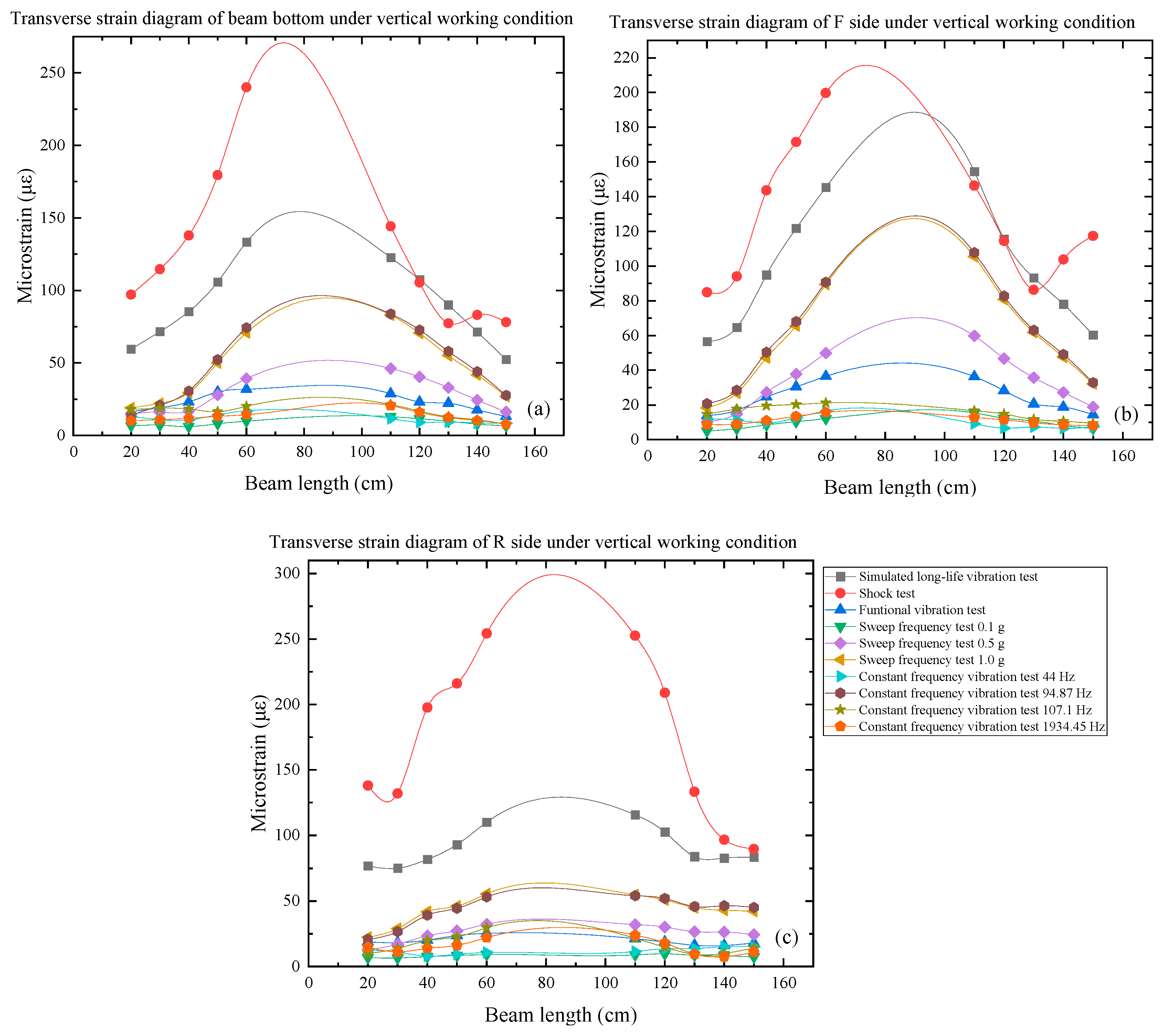
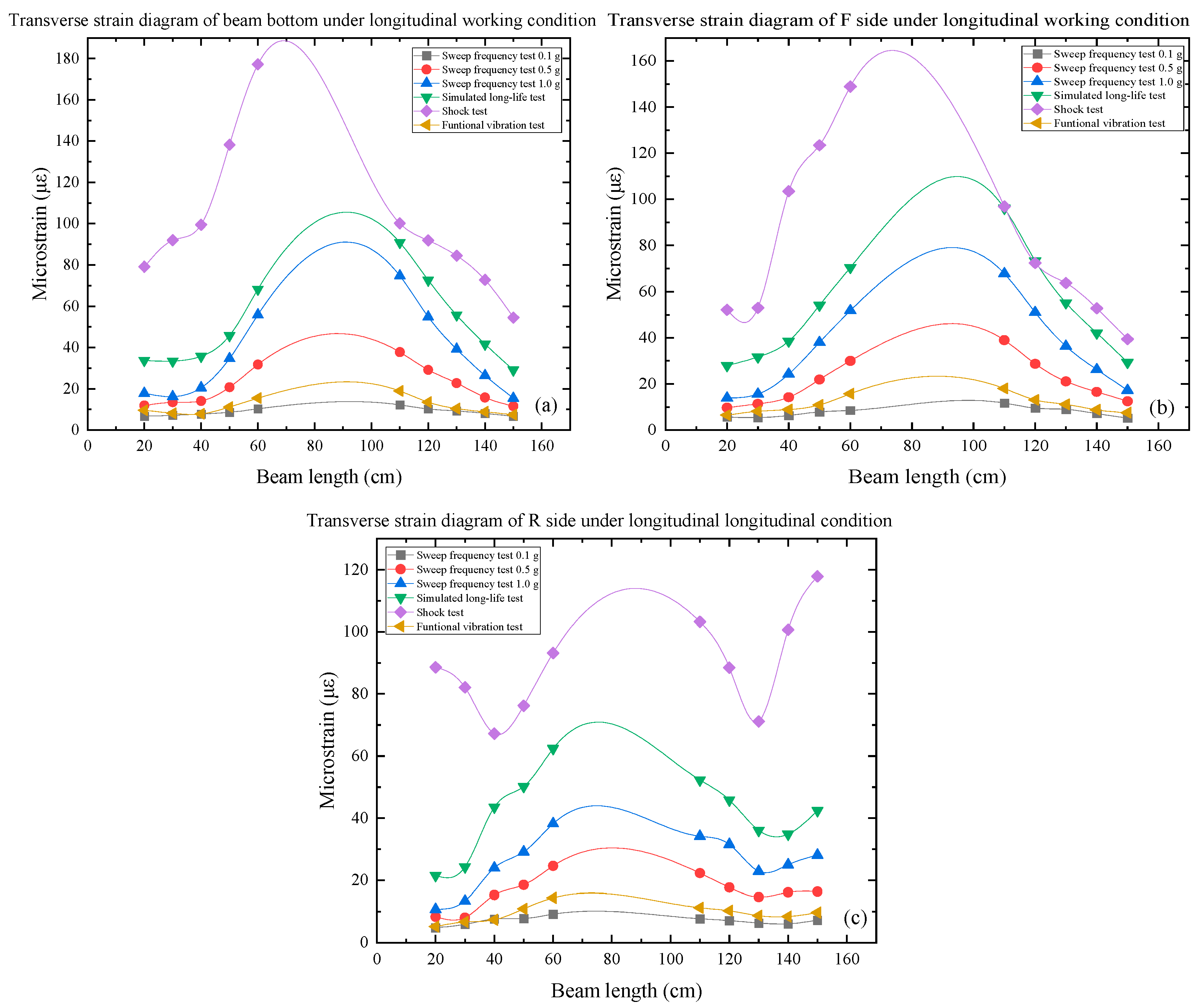
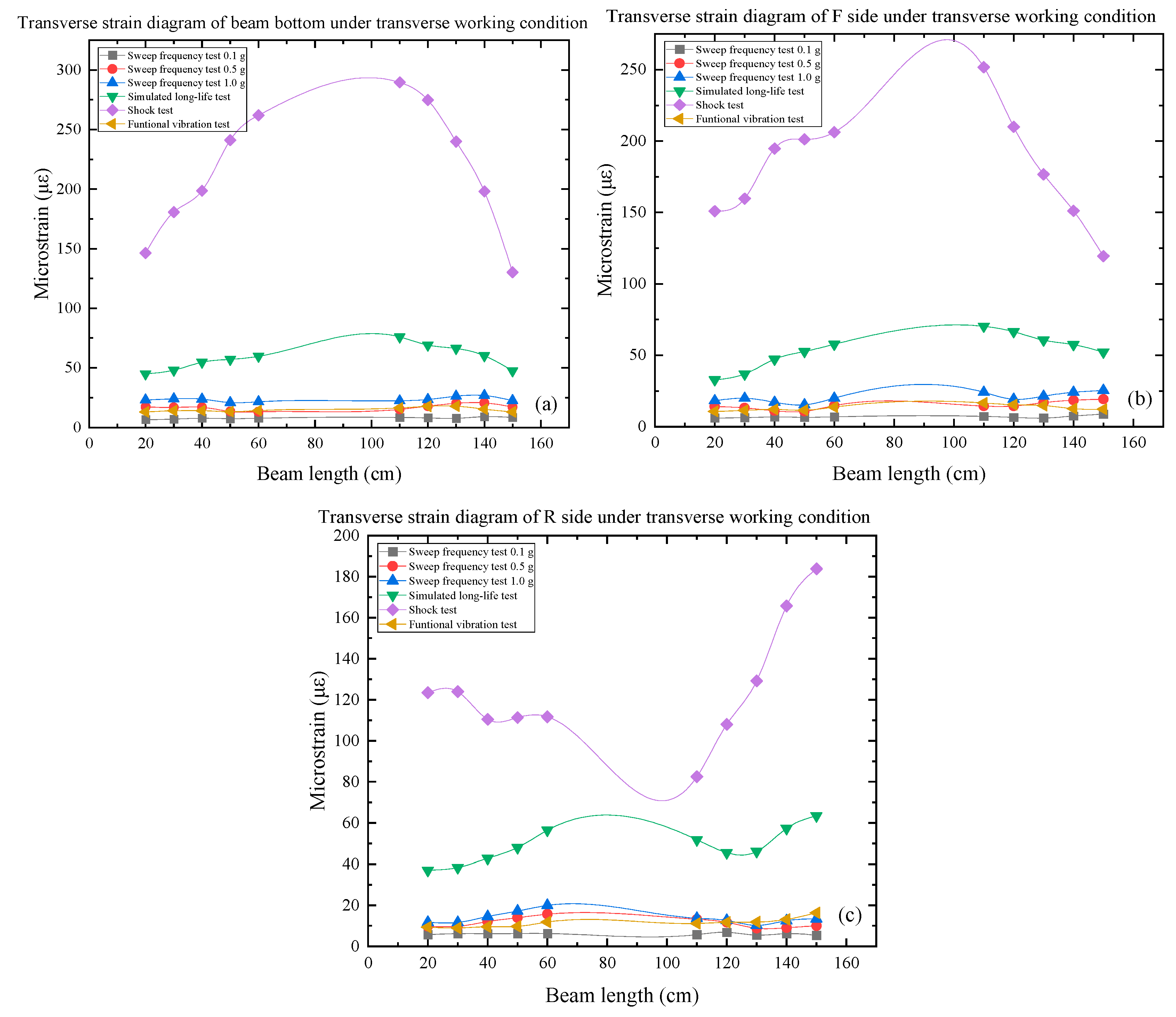

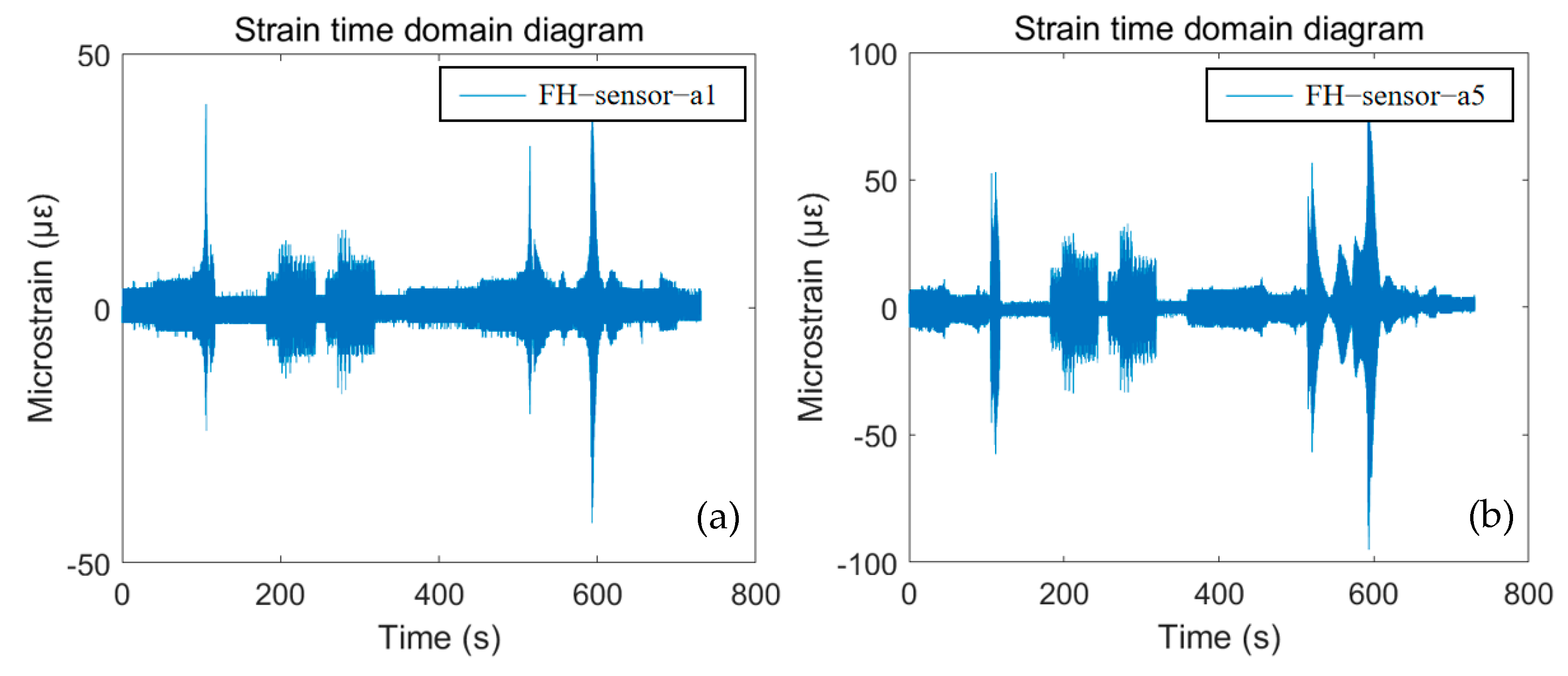
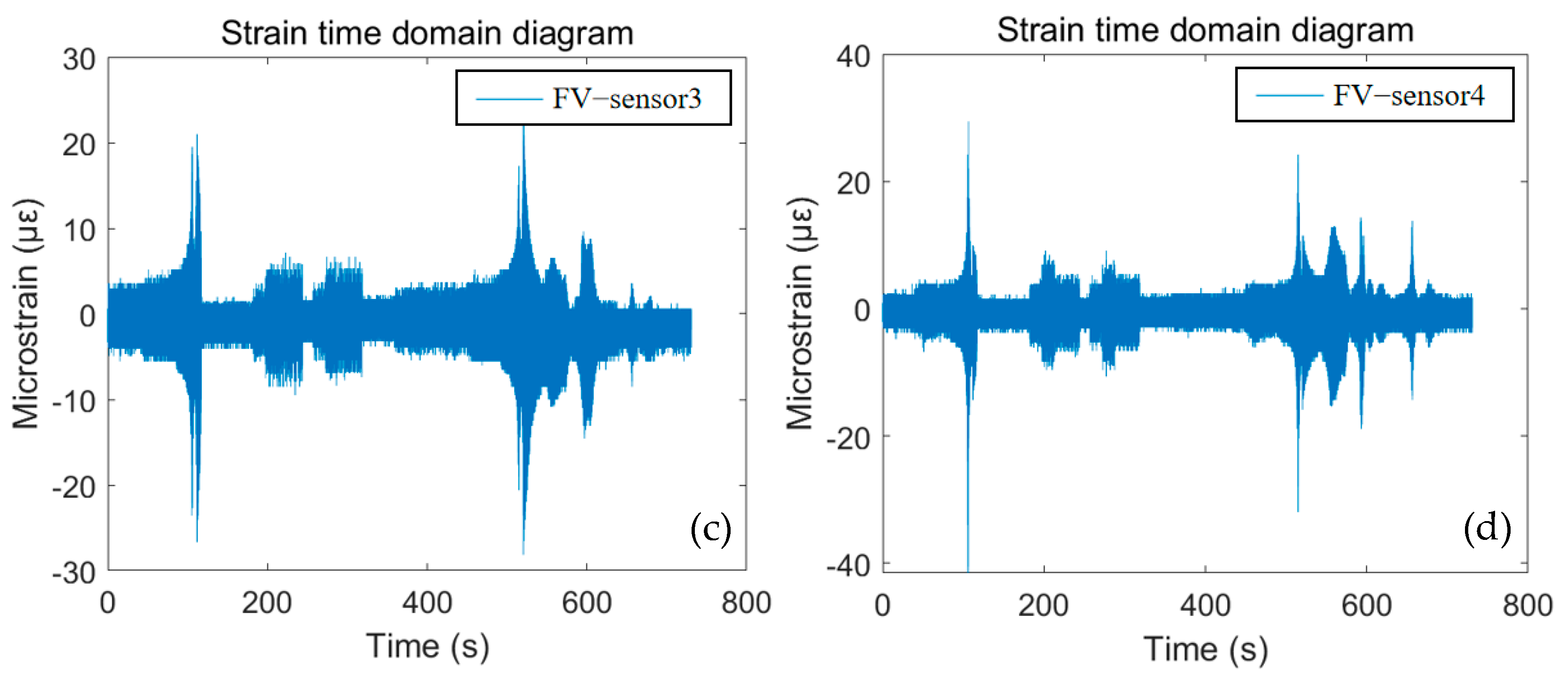
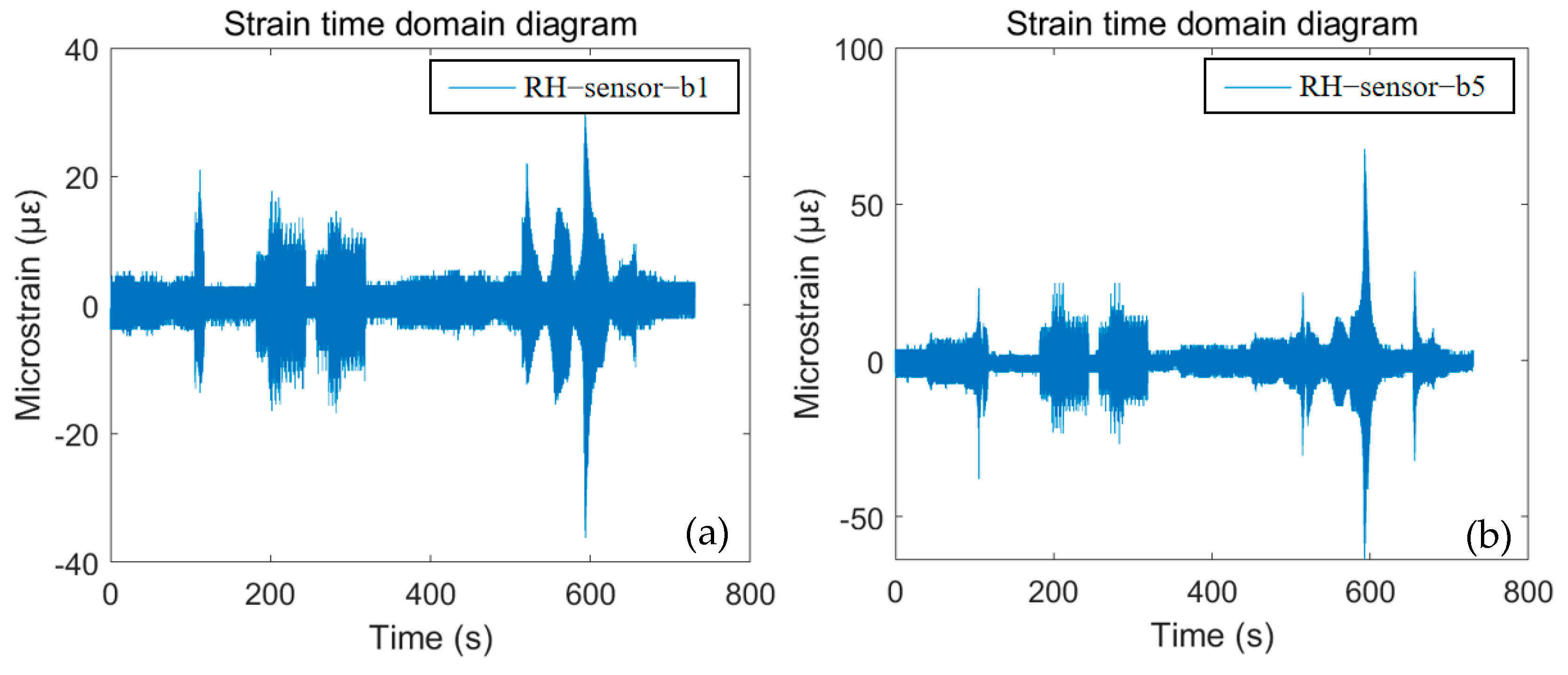
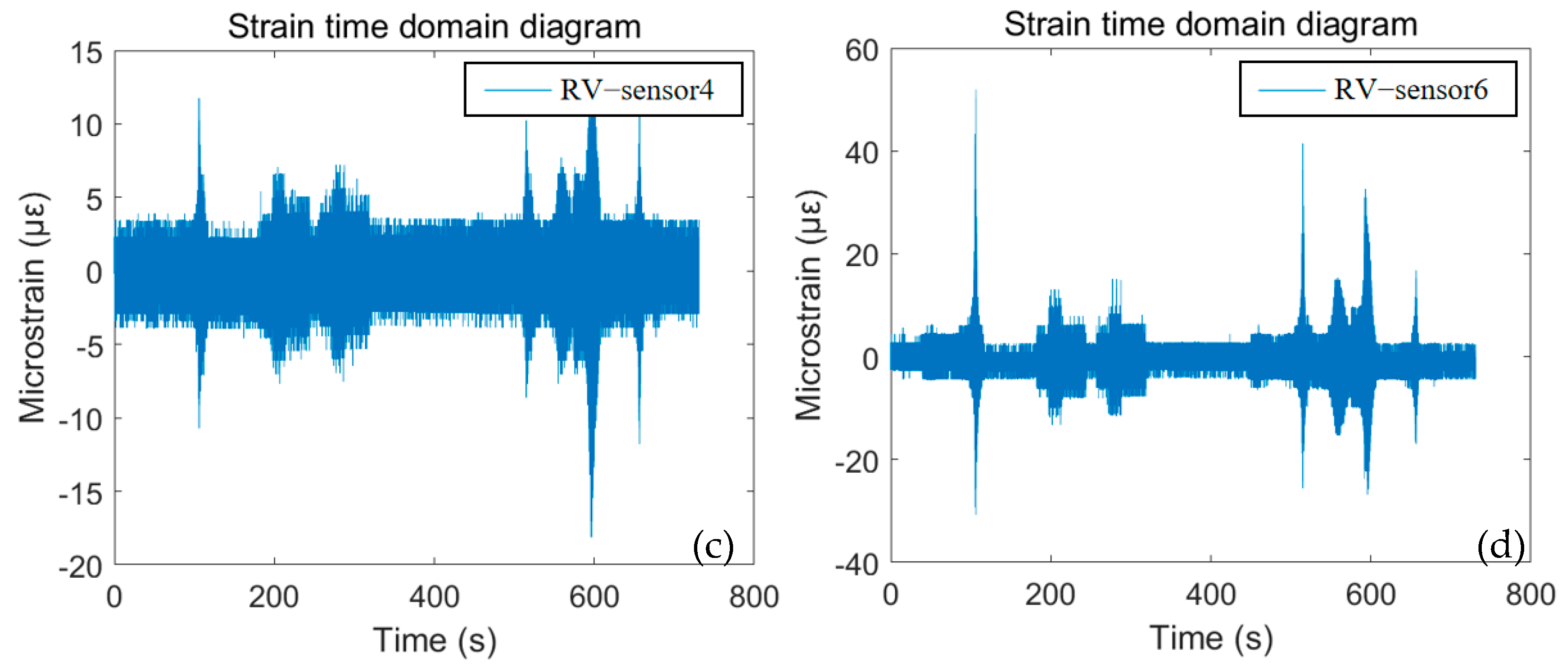


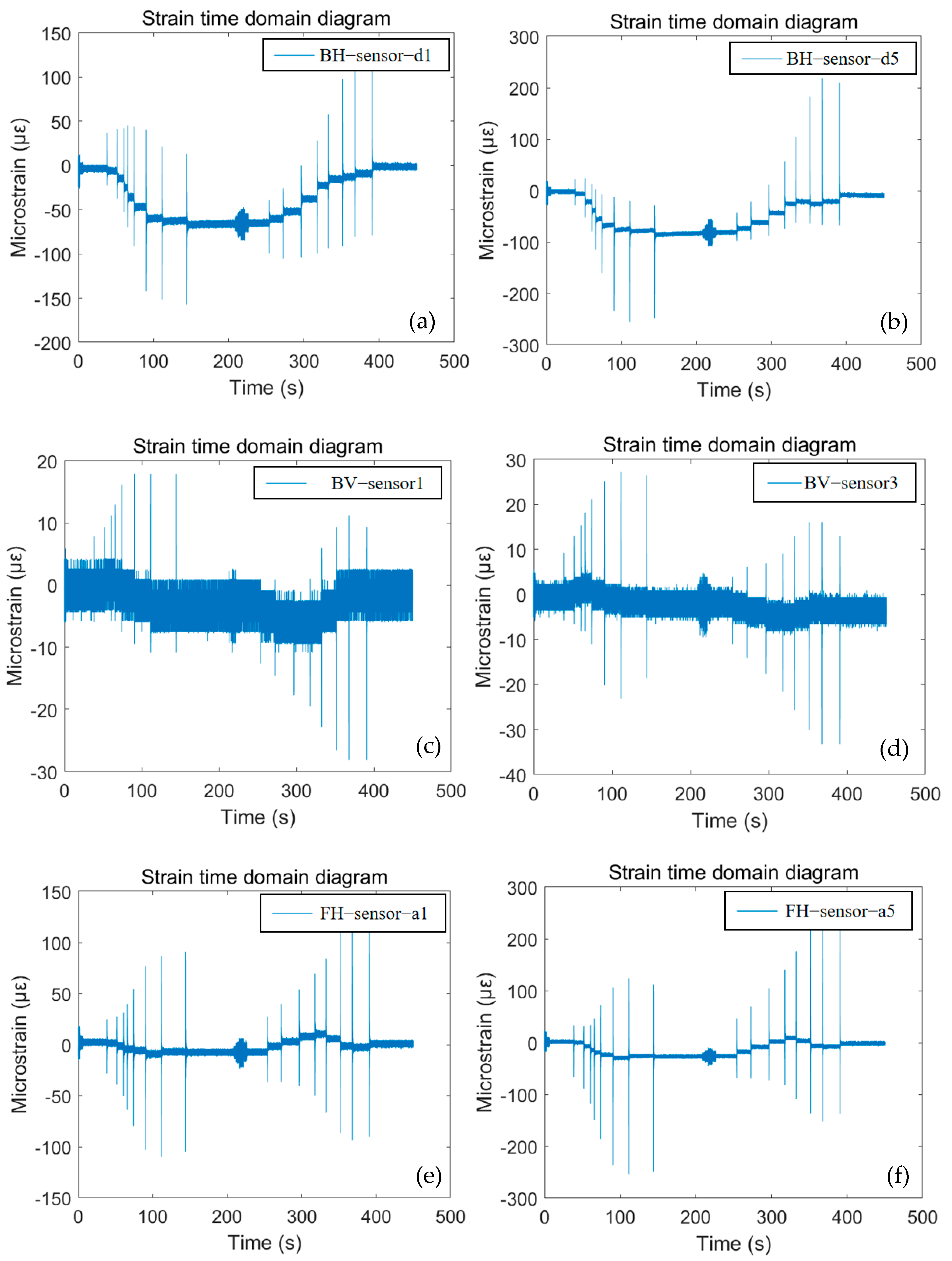
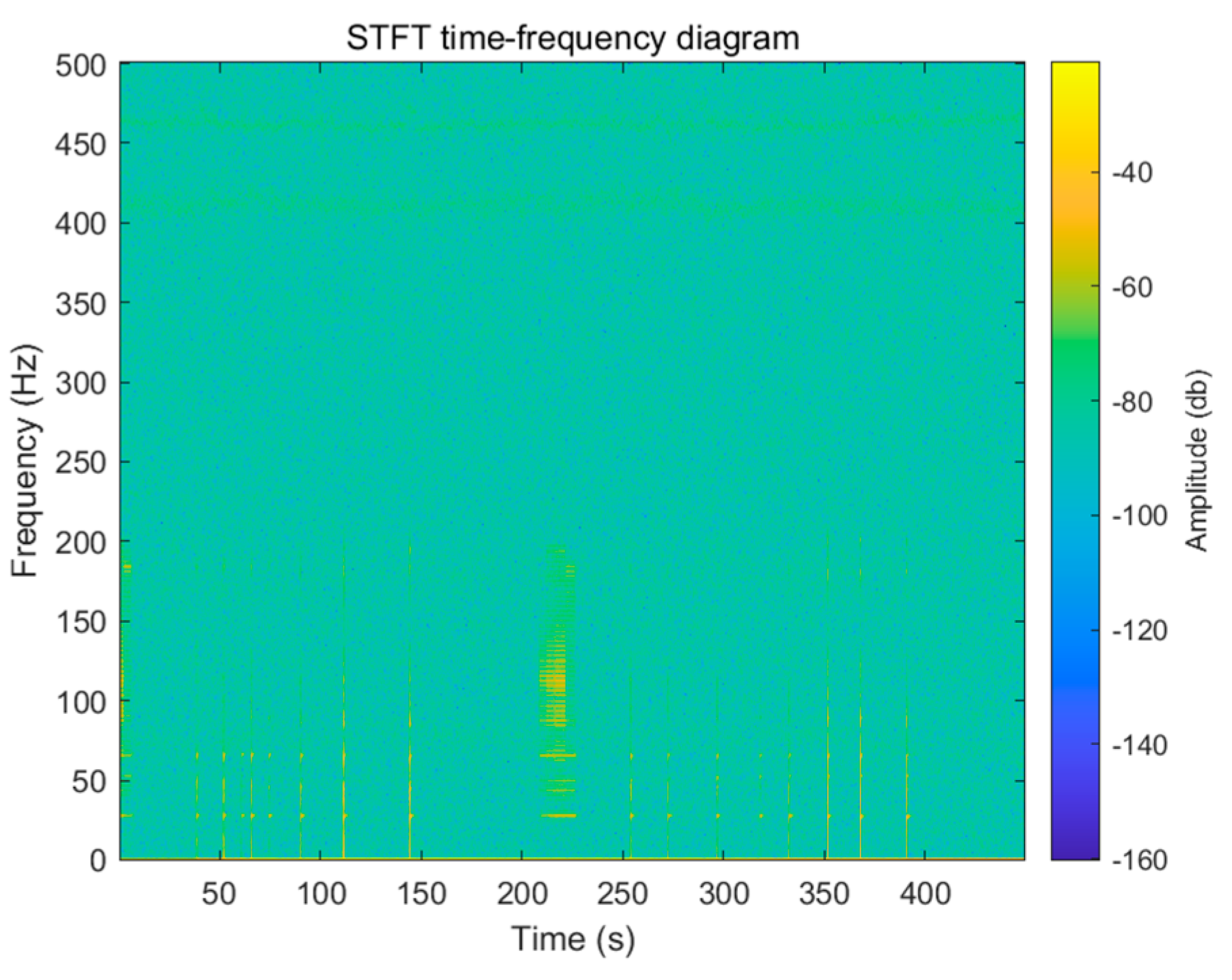
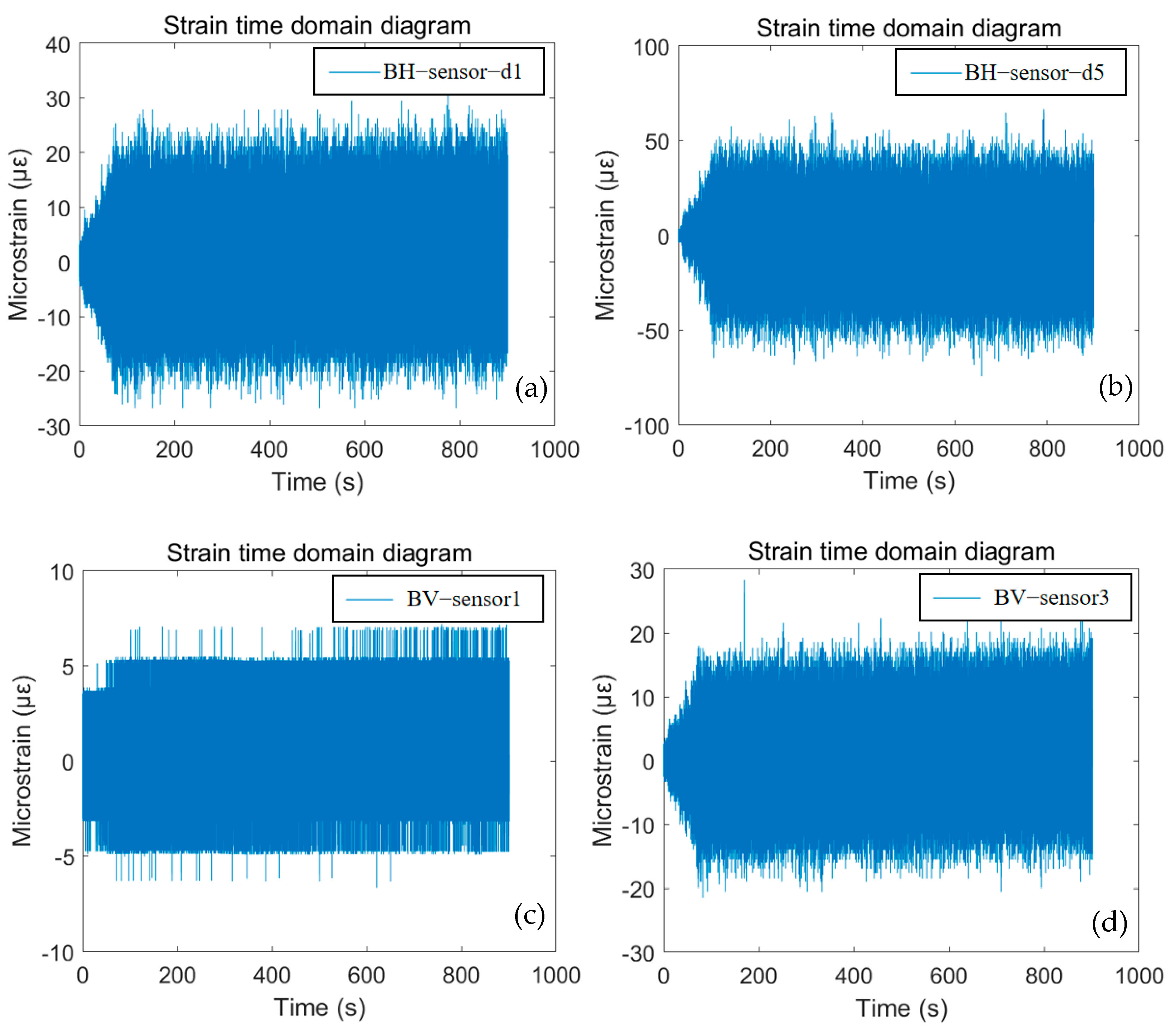
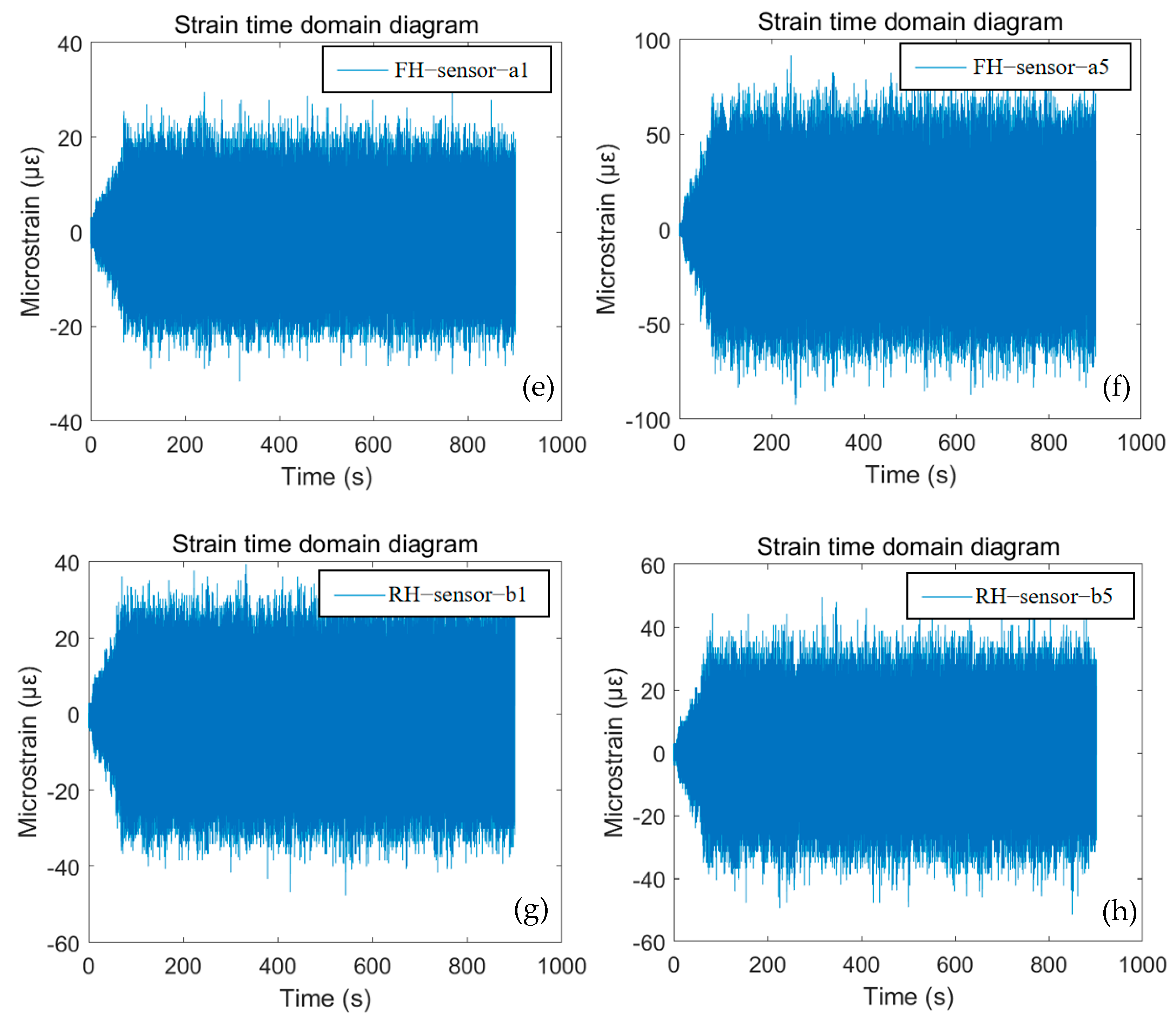
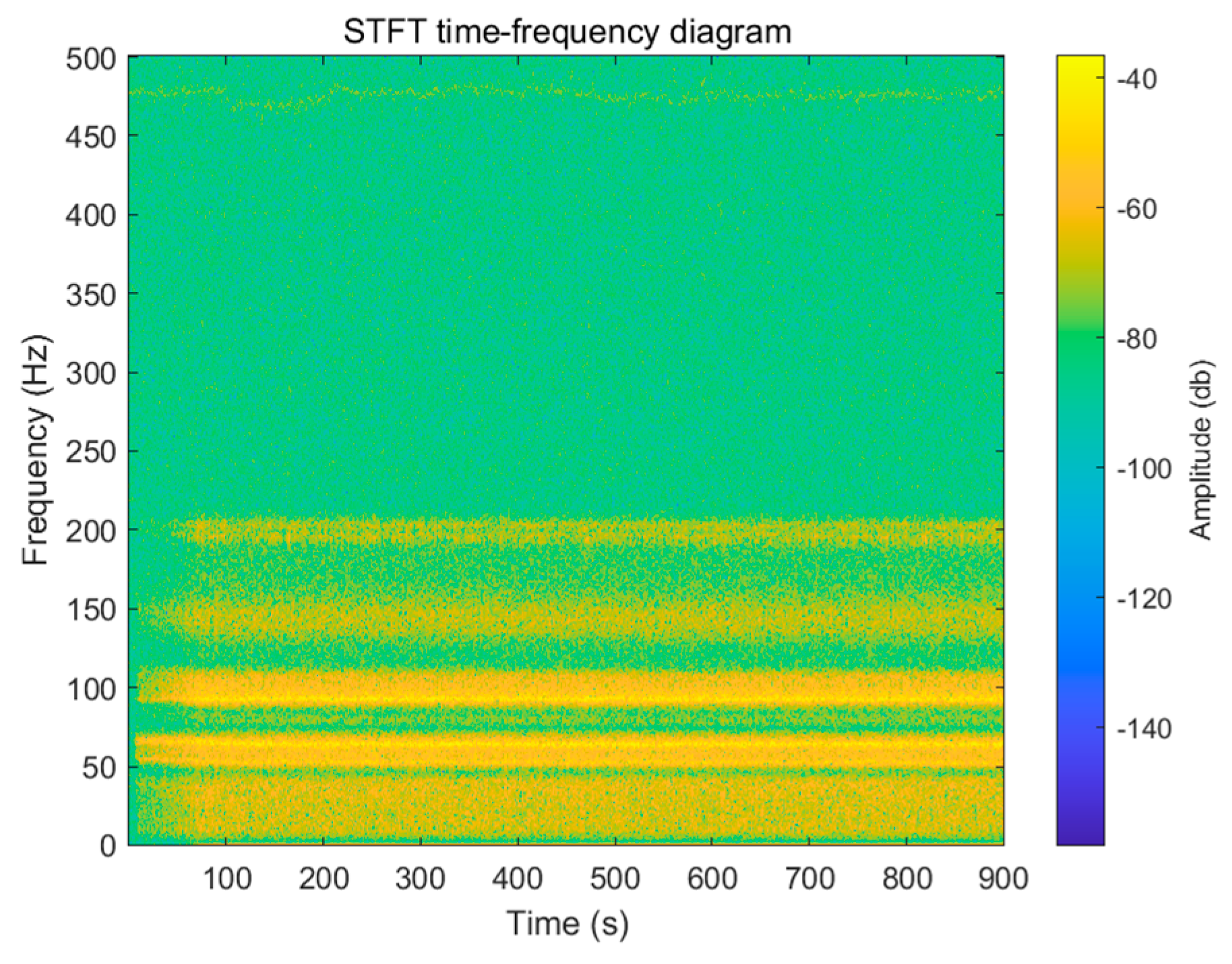
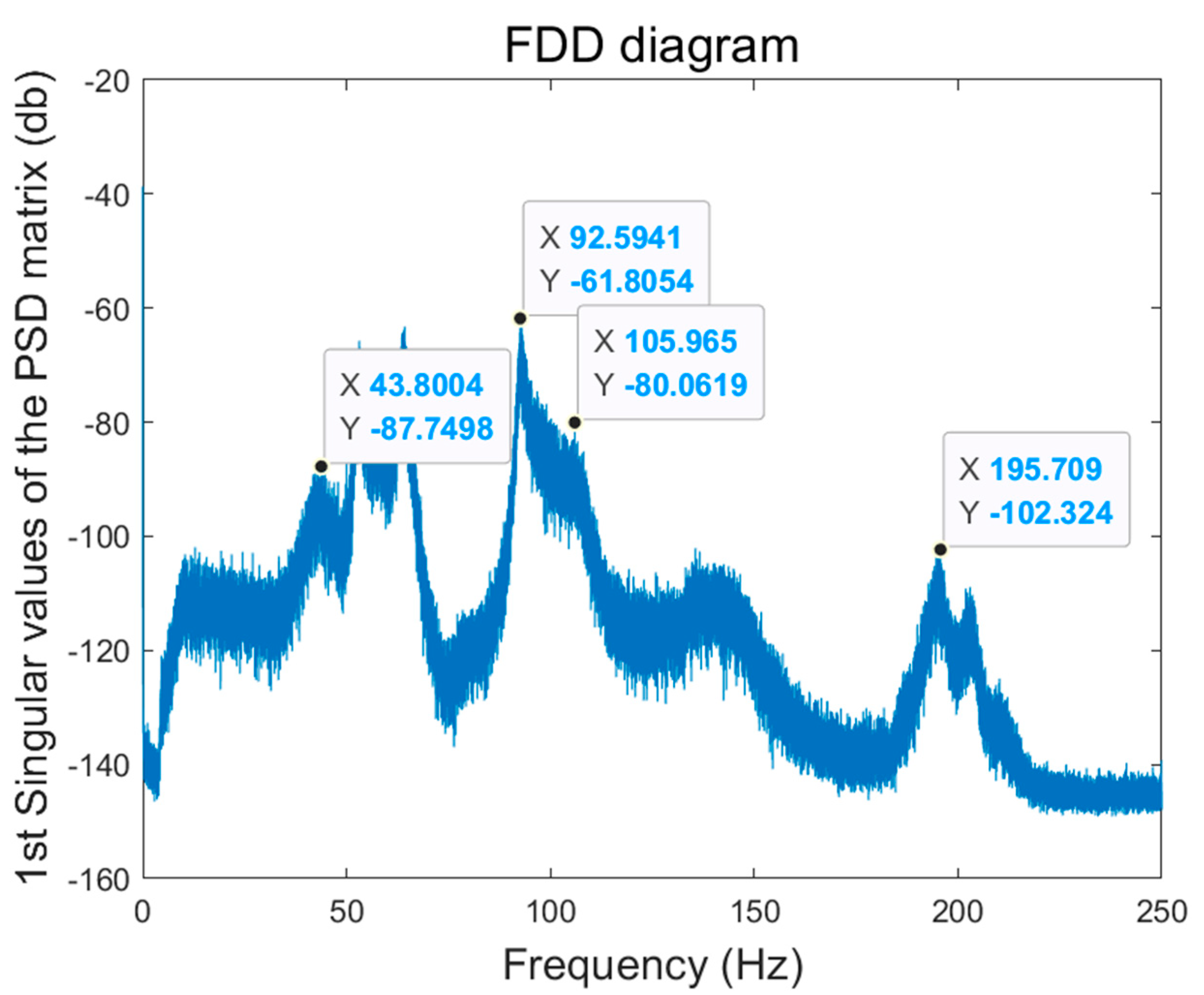

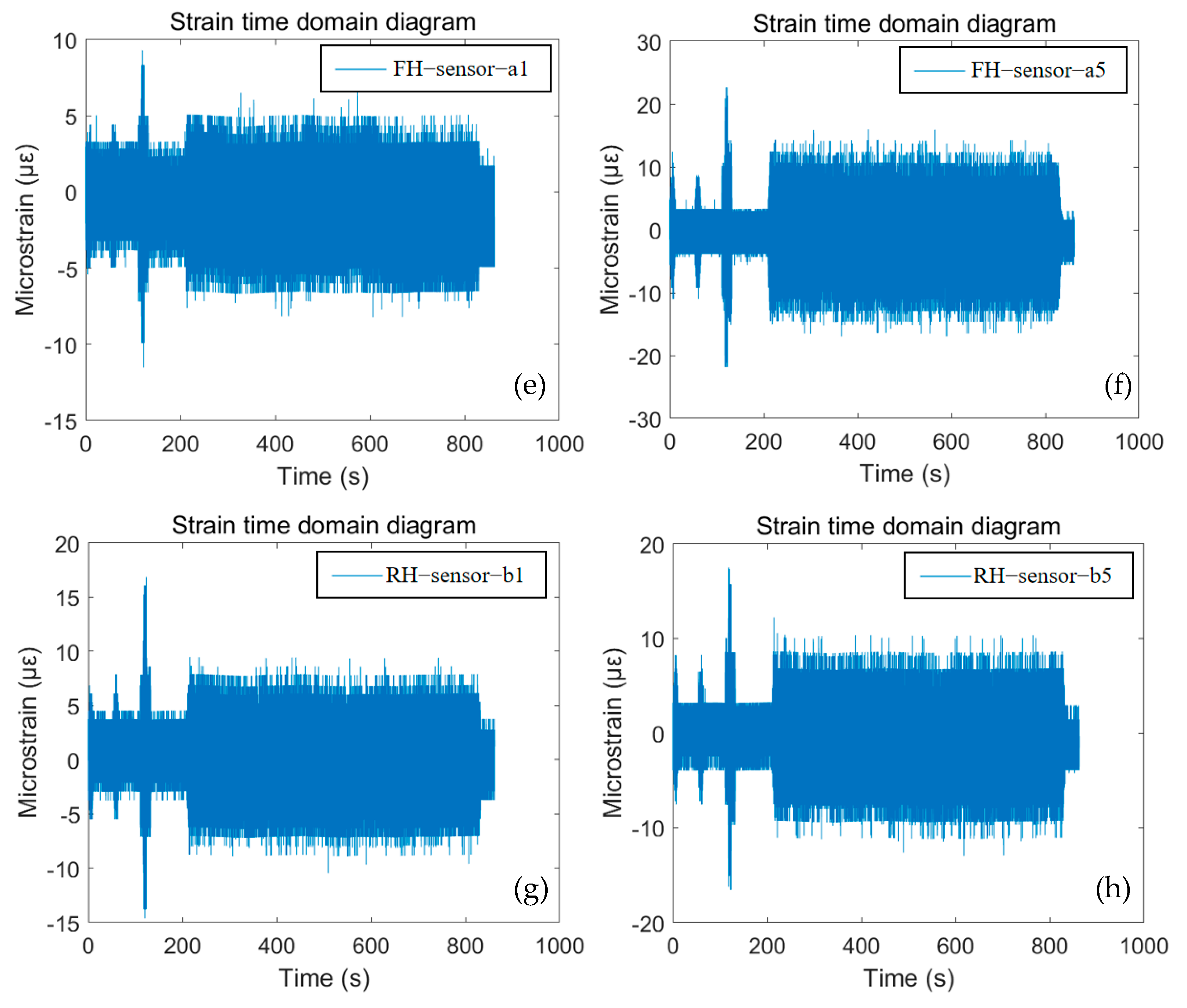
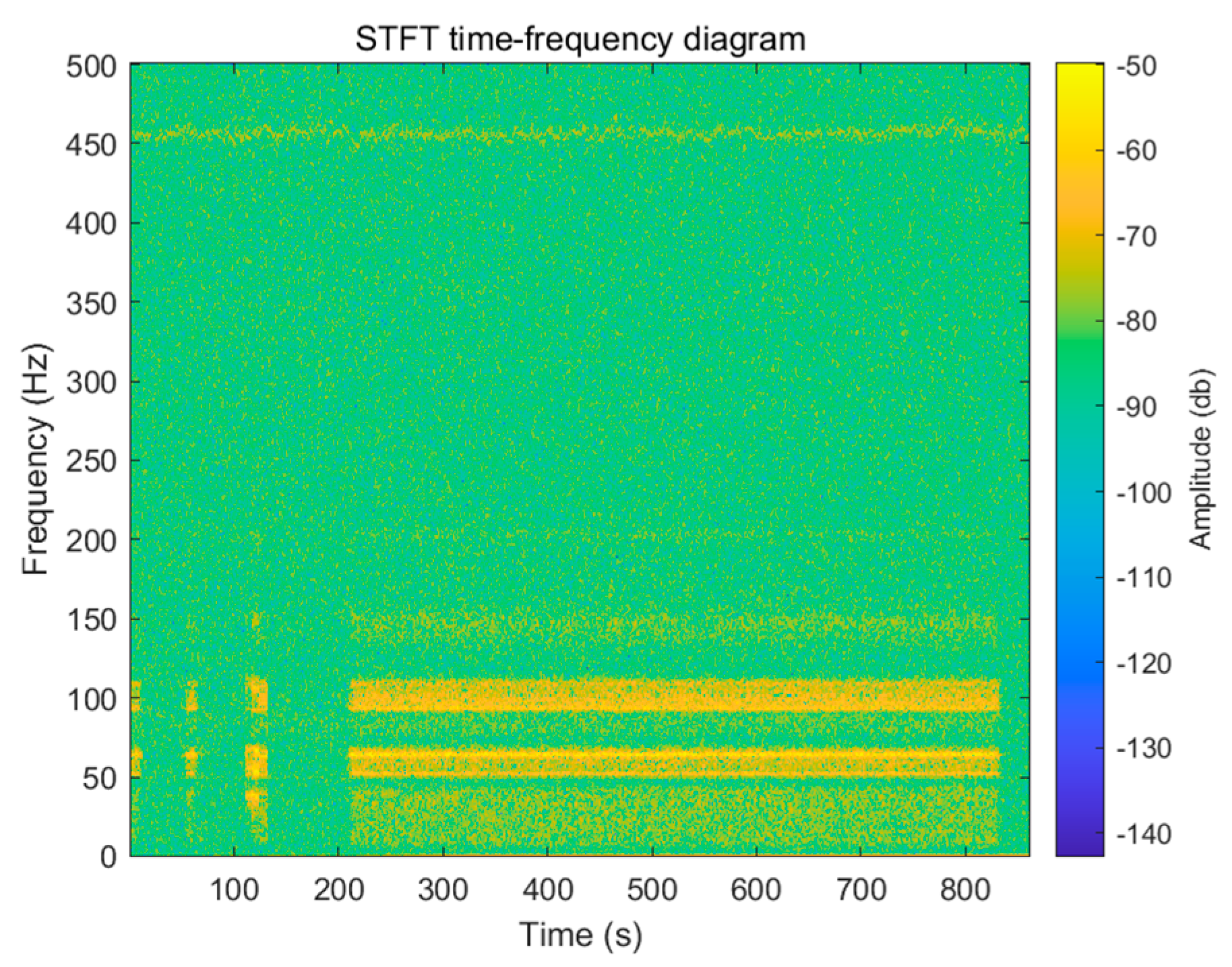
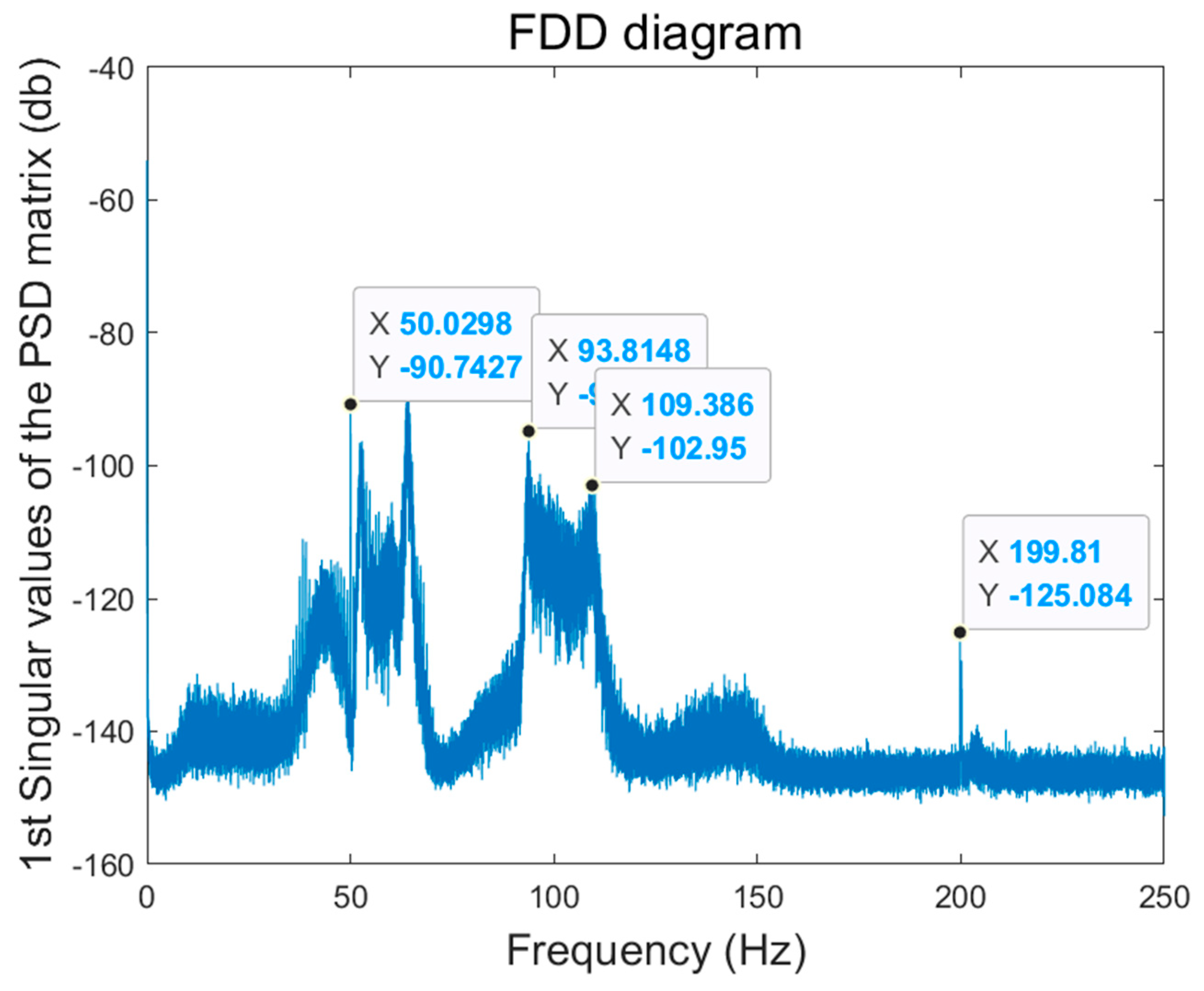
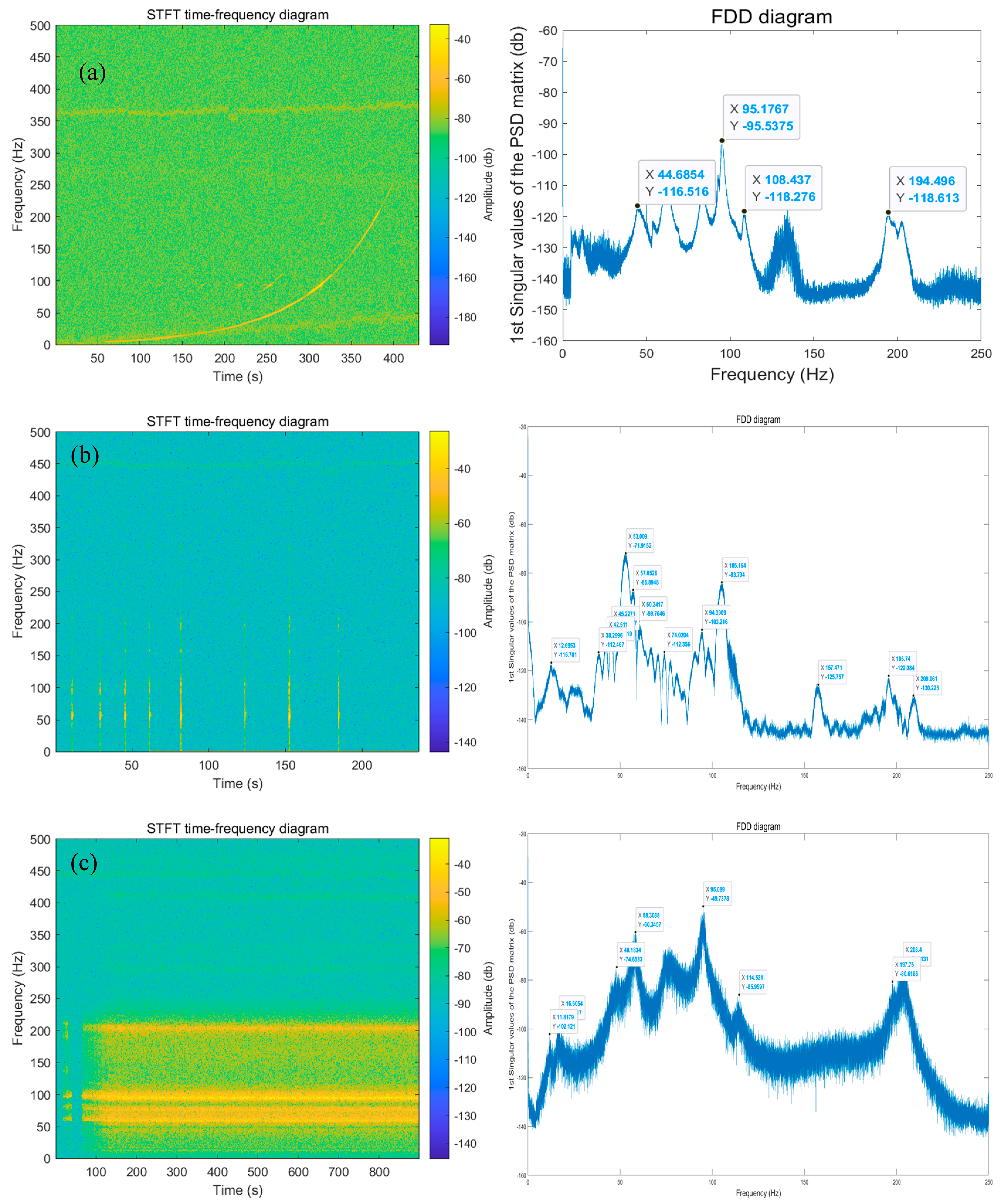
| Shock Num | 1 | 2 | 3 | 4 | 5 | 6 | 7 | 8 |
|---|---|---|---|---|---|---|---|---|
| RMS | 0.0084 | 0.0109 | 0.0125 | 0.0148 | 0.0194 | 0.0261 | 0.0279 | 0.0282 |
Disclaimer/Publisher’s Note: The statements, opinions and data contained in all publications are solely those of the individual author(s) and contributor(s) and not of MDPI and/or the editor(s). MDPI and/or the editor(s) disclaim responsibility for any injury to people or property resulting from any ideas, methods, instructions or products referred to in the content. |
© 2024 by the authors. Licensee MDPI, Basel, Switzerland. This article is an open access article distributed under the terms and conditions of the Creative Commons Attribution (CC BY) license (https://creativecommons.org/licenses/by/4.0/).
Share and Cite
Chen, C.; Zhang, C.; Ma, J.; He, S.-Z.; Chen, J.; Sun, L.; Wang, H.-P. FBG Sensing Data Motivated Dynamic Feature Assessment of the Complicated CFRP Antenna Beam under Various Vibration Modes. Buildings 2024, 14, 2249. https://doi.org/10.3390/buildings14072249
Chen C, Zhang C, Ma J, He S-Z, Chen J, Sun L, Wang H-P. FBG Sensing Data Motivated Dynamic Feature Assessment of the Complicated CFRP Antenna Beam under Various Vibration Modes. Buildings. 2024; 14(7):2249. https://doi.org/10.3390/buildings14072249
Chicago/Turabian StyleChen, Cong, Chao Zhang, Jie Ma, Shi-Zhong He, Jian Chen, Liang Sun, and Hua-Ping Wang. 2024. "FBG Sensing Data Motivated Dynamic Feature Assessment of the Complicated CFRP Antenna Beam under Various Vibration Modes" Buildings 14, no. 7: 2249. https://doi.org/10.3390/buildings14072249





